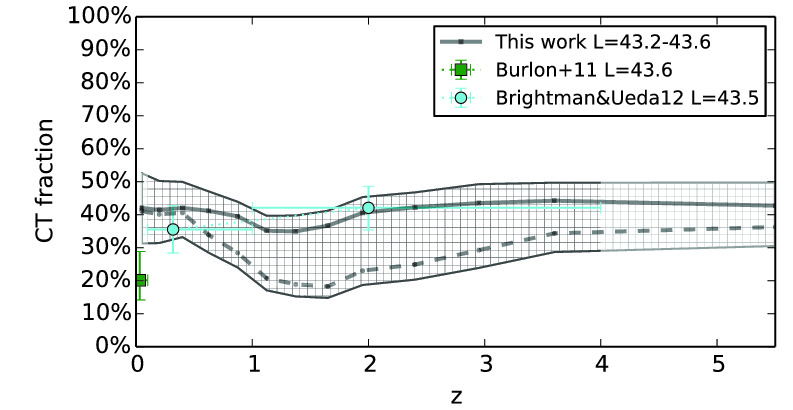|
Observations suggest that a substantial fraction of the
black holes at the centres of galaxies grow their masses
in dust enshrouded environments. As a result most of the
direct radiation emitted by the accretion process onto the
black hole is absorbed. The identification of such
obscured AGN is therefore challenging and measurements of
their space density and cosmological evolution are
debated.
Work is in progress to improve observational constraints
on the whereabouts of obscured AGN. X-ray observations are
used to identify active supermassive black holes across
redshift to take advantage of the efficiency of X-ray
photons in penetrating large columns of obscuring
material. Novel methods based on the Bayesian approach are
developed to analyse the X-ray data and characterise the
properties of individual AGN, such as accretion luminosity
and line-of-sight obscuration (Buchner et al. 2014).
X-ray survey fields from Chandra and XMM are used to
determine the population properties of AGN samples and
measure their space density as a function of accretion
luminosity, redshift and line-of-sight obsuration. These
studies demonstrate that obscured AGN dominate the
accretion history of Universe by accounting for almost 80%
of the overall AGN space and X-ray luminosity density
averaged over cosmic time (Buchner et al. 2015, Aird et al. 2015). These
observations further show that the fraction of obscured
AGN increases with redshift and also provide robust
constraints on the evolution of the most heavily obscured
(Compton thick) AGN out to redshift z≈5.
|
